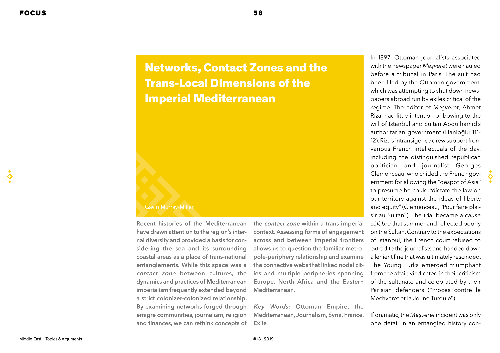Networks, Contact Zones and the Trans-Local Dimensions of the Imperial Mediterranean
Recent histories of the Mediterranean have drawn attention to the region’s internal diversity and provided a basis for considering the sea and its surrounding coastal areas as a place of trans-national entanglements. While this space was a contact zone between cultures, the dynamics and practices of...
I tiakina i:
| I whakaputaina i: | Middle East - Topics & Arguments |
|---|---|
| Kaituhi matua: | |
| Hōputu: | Artikel (Zeitschrift) |
| Reo: | Ingarihi |
| I whakaputaina: |
Philipps-Universität Marburg
2019
|
| Ngā marau: | |
| Urunga tuihono: | Urunga tuihono |
| Tags: |
Tāpirihia he Tūtohu
Keine Tags, Fügen Sie den ersten Tag hinzu!
|
| Whakarāpopototanga: | Recent histories of the Mediterranean have drawn attention to the region’s internal diversity and provided a basis for considering the sea and its surrounding coastal areas as a place of trans-national entanglements. While this space was a contact zone between cultures, the dynamics and practices of Mediterranean imperialism frequently extended beyond a strict colonizer-colonized relationship. By examining networks forged through émigré communities, journalism, religion and finances, we can rethink concepts of the contact zone within a trans-imperial context. Assessing forms of engagement across and between imperial frontiers allows us to question the familiar metropole- periphery relationship and examine the connective webs that linked nodal cities and multiple peripheries spanning Europe, North Africa and the Eastern Mediterranean. |
|---|---|
| DOI: | 10.17192/meta.2019.13.8075 |
 Publikationsserver
Publikationsserver